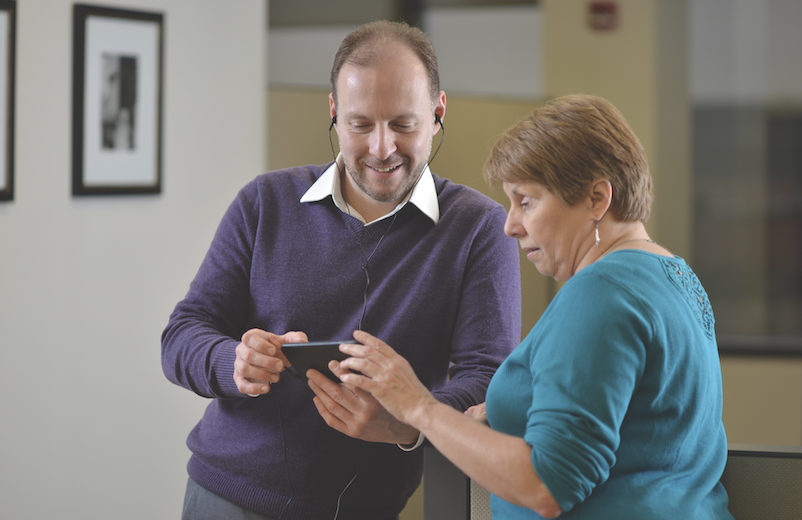
Survey participants use a variety of assistive technology (AT). A majority of participants reported using screen-reading software, either built-in on their devices or installed as third-party software. One hundred nine (27.4%) of the participants use built-in visual access features, and fifty-one (12.8%) use some form of screen magnification. Fifty-two participants reported using AT related to being d/Deaf or hard of hearing, most commonly screen-reading software with hearing support, while 22 participants reported using AT related to a physical disability, most commonly voice recognition software. Other commonly used AT included voice assistants (such as Siri or Google Assistant) and remote visual interpreting services. Table 2 lists the AT technologies participants use.
Table 2: AT Devices Used
| AT for People Who Are Blind or Have Low Vision | n = 398 |
|---|---|
| Third-party screen reading software | 270 (67.8%) |
| Built-in screen reading software | 259 (65.1%) |
| Built-in voice assistantl | 258 (64.8%) |
| Visual interpreting service | 142 (35.7%) |
| Built-in visual access features | 109 (27.4%) |
| Refreshable braille display | 92 (23.1%) |
| Braille notetaker | 71 (17.8%) |
| Large monitor | 56 (14.1%) |
| Handheld magnifier | 53 (13.3%) |
| Screen magnification software | 51 (12.8%) |
| Video magnifier/CCTV | 40 (10.1%) |
| Combined screen reader and magnification software | 16 (4.0%) |
| AT for People Who Are Deaf / Hard of Hearing | (n = 52) |
| Screen reader with hearing support | 41 (78.9%) |
| Teletypewriter (TTY) with standard print output | 3 (5.8%) |
| TTY with screen magnification | 3 (5.8%) |
| TTY with braille output | 3 (5.8%) |
| Home alert system | 1 (1.9%) |
| AT for People Who Are Blind or Have Low Vision | n = 398 |
| AT for People with Physical or Motor Disabilities | (n = 22) |
| Voice recognition or speech-to-text software | 19 (86.4%) |
| Switch | 1 (4.5%) |
| Other | 7 (31.8%) |